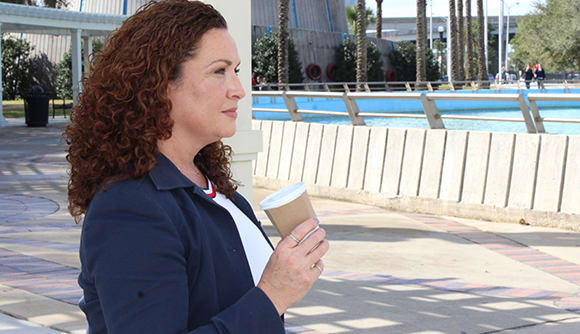Oh my GERD!
Living with acid reflux doesn’t have to be your normal.
Article Author: Beth Stambaugh
Article Date:

Most of us take simple things like lying down or going out to dinner for granted. For Hope Tallon, these basic activities left a bad taste in her mouth – literally.
“I had severe heartburn and reflux for 25 years, and it got progressively worse during the past 10 years,” Tallon said. “I had symptoms every single day. It caused burning pain and a horrible bitter taste. Playing with my dogs on the floor or even doing a yoga plank would trigger it. Even taking a sip of water could cause the stomach acid to come up.”
Tallon had a condition called GERD (gastroesophageal reflux disease), which affects about 25% of the population. Some people’s symptoms can be assuaged by diet changes and medications, but for Tallon, nothing relieved her chronic reflux.
“I couldn’t drink coffee, alcohol, spicy or fried foods, beef, cheese, and the list went on,” she said. Antacids and PPIs (proton pump inhibiting medication) didn’t provide relief. Even buying a special bed to sleep upright didn’t help.
An endoscopy revealed that Tallon had early onset of Barrett’s esophagus, a condition in which erosion of the esophagus could eventually lead to cancer.
“My throat was so raw that I couldn’t even eat a potato chip,” Tallon said. Her physician recommended she see Craig Morgenthal, MD, a surgeon at Baptist Center for Bariatric and Reflux Surgery.
“Hope was a perfect candidate for a procedure called the LINX Reflux Management System. She was young and healthy and had exhausted a number of solutions,” Dr. Morgenthal said.
Even for patients who do see improvement with medication, long-term PPI use may be associated with potentially dangerous side effects, including increased risk of bone fractures and a potential link to increased risk of dementia, according to JAMA Neurology.
What is LINX and how does it help?
LINX is small ring about the size of a quarter made of flexible bands of magnets enclosed in titanium beads. The device is placed around the lower esophageal sphincter just above the stomach. The beads open when food or liquid goes down the throat and then contract once food is swallowed so stomach acid can’t back up.
“The procedure is done in a minimally invasive way that usually takes an hour or so to perform,” Dr. Morgenthal said. Patients, including Tallon, usually go home the next day.
“I had two or three days where I had to take it easy, and then my world completely changed,” said Tallon. “I haven’t had any issues with heartburn or reflux since the surgery.”
She is now off all of her medications and doesn’t have any diet restrictions. She’s decided to get back to gym to lift weights, something she couldn’t do before the surgery.
“People think they can just pop an antacid and live with it. They don’t realize there are real solutions out there,” said Tallon. “I wish I would have done it sooner.”
If you have persistent reflux, visit refluxjax.com for more information or to make an appointment.



